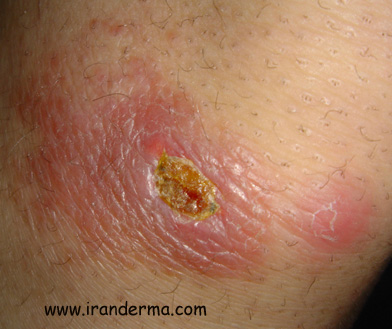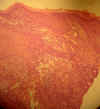IRANDERMA |
|
Quiz: July 2005 |
A 23-year-old fe male presented with a 6 months history for asymptomatic plaque on her right knee. She was on no medications and had not any significant medical problem. Routine laboratory tests were all in normal range.
What is your diagnosis?



Diagnosis: Lupus Vulgaris
The clinical
manifestations of cutaneous tuberculosis comprise a considerable number of
entities, usually classified based on morphology and, more recently, the
mode of infection or the immunologic state of the host.
Lupus vulgaris is
one of the most common forms of cutaneous tuberculosis. It is an extremely
chronic and progressive form of cutaneous tuberculosis occurring in
individuals with moderate immunity and a high degree of tuberculin
sensitivity. Lupus vulgaris is acquired exogenously by direct inoculation
of the bacilli or endogenously via hematogenous or lymphatic spread from
associated tuberculosis of other organs.
Histopathologically, tubercles or tuberculoid structure composed of epithelioid cells and giant cells are present.
In this case, my initial impression was leishmanisis in spite of negative smear. Weekly glucanthime injections resulted in no significant response. Then, a biopsy was done. The histopathology showed a granulomatous pattern with caseous necrosis which was more compatible with lupus vulgaris. I found no internal source for tuberculosis in this case. I'll try to update this case after follow up. Omid Zargari, MD
ايران درما |